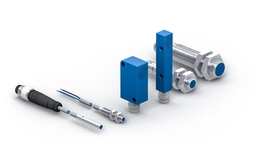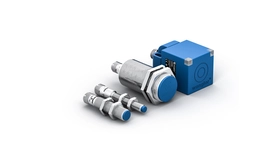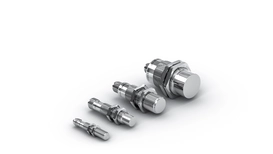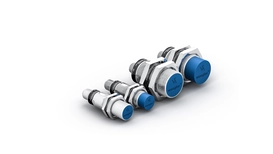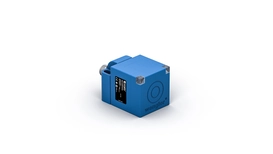Endüktif Sensörlerin Çalışma Şekli

Endüktif sensörler metal objeleri temassız olarak algılar ve sensör ile ölçüm objesi arasındaki mesafeyi elektromanyetik endüksiyon ile ölçer. Bunun için bir akım bir bobinden geçer, bu da bobinin etrafında bir elektromanyetik alan oluşturur. Örneğin çelik veya alüminyum gibi elektrik ileten bir obje manyetik alana yaklaştığında, manyetik alan değiştirilir. Endüktif sensör manyetik alandaki değişikliği algılar ve bu değişikliği değerlendirerek yakındaki bir metal objenin olup olmadığını belirler.
Çeşitli anahtarlama çıkışları
Dijital anahtarlama çıkışında, sensör elektrik ileten bir obje algıladığında hemen bir sinyal bulunur. Mesafe, analog bir çıkış üzerinden oransal gerilim sinyali olarak, ya 4 mA…20 mA akım değeri olarak ya da 0 V…10 V gerilim değeri olarak verilebilir. IO-Link arayüzüne sahip endüktif sensörlerde, anahtarlama çıkışları (NPN, PNP veya push-pull ) açıcı veya kapatıcı olarak ve de anahtarlama mesafeleri yapılandırılabilir.
Endüktif sensörlerde anahtarlama mesafeleri

Düzeltme faktörü 1
Anahtarlama mesafesine çeşitli malzemelerin etkisi
Endüktif sensörlerde anahtarlama frekansı

weproTec 和备用频率
















